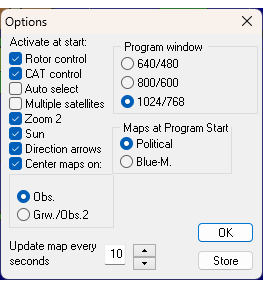Table of contents
Abstract
This project is an automatic satellite tracking antenna system for amateur radio communications.
Project
This project is an update to my satellite tracking project started a few years ago. It seems fitting to include it as a Time and Space Project14 entry. The only issue is that I don't use any arduino boards in the system.
SatNOGS automatic satellite tracking antenna rotator
As part of a grant from the ARDC (Amateur Radio Digital Communications Foundation), our radio club at the University of Notre Dame purchased the equipment to build up this system.
The parts that we purchased is as follows:
MSQ-2MCP14 2M band Yagi antenna
MSQ-436CP30 70cm band Yagi antenna
ZYS-G-5500 Yaesu G-5500DC Azimuth-Eleevation Rotor System
ZYS-GS-232B Computer interface for G-5500
ZXN-25-TPD Tripod for antenna
SatPC32 tracking system software
https://www.dk1tb.de/indexeng.htm
The antennas took a full day to assemble. Here's a pic of the assembled system a few months ago before winter.
I will be putting the system back together again now that the weather is getting better.
Two antennas are required because the ISS repeater communicates using one band for upload and another for download.
The FM voice repeater frequencies are 145.800MHz, and 437.800MHz. The APRS digital packet frequency is 145.825MHz
The status of various (LEO) low earth orbit satellites including the ISS can be found at this link
The current status of the ISS (International Space Station) radios can be found at this link
https://www.ariss.org/current-status-of-iss-stations.html
Here's a video of the system tracking in operation.
The SATpc32 software gets the orbit coordinates of the satellite chosen for tracking, and interfaces with the rotor controller to automatically point the antenna in the direction of the satellite.




Top Comments